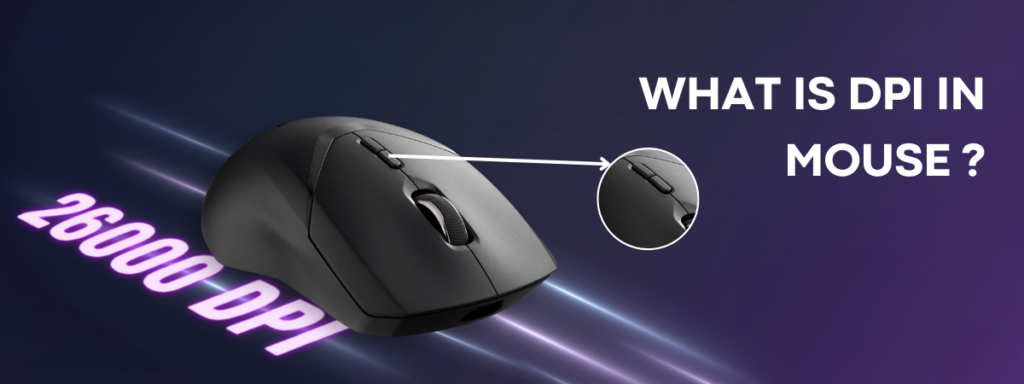


What is DPI in a Mouse? And Why is it Important while Gaming? DPI (Dots Per Inch) measures how sensitive your mouse is to movement. A higher DPI means faster cursor movement, which is crucial for quick reflexes in gaming. Gamers often adjust DPI to suit different game styles, from precision sniping to rapid action.
In this guide, we’ll delve into what DPI means on a mouse and its significance, especially for gamers and those seeking optimal mouse performance. Let’s dive in.
DPI, or dots per inch, measures a mouse’s sensitivity, determining the speed of the cursor on the screen. Every mouse comes with a DPI count, typically ranging from 800 to 1600 for basic office mice. Higher DPI enables faster cursor movement, while lower DPI ensures slower, more precise movements. This difference is crucial, with higher DPI offering quicker and more responsive cursor movements, suitable for tasks requiring speed. However, tasks demanding precision, like graphic design, may benefit from lower DPI settings.
DPI directly influences speed and sensitivity, crucial elements in gaming. While some mice offer adjustable DPI settings, others don’t, limiting adjustments to pointer speed on Windows systems. Determining the ideal DPI involves considering various factors such as mouse weight, size, hand size, mousepad, and in-game sensitivity. Generally, a DPI range of 400-3600 suits most gamers, though optimal settings vary based on individual preferences and game genres.
Rapoo’s V360 IR Gaming mouse exemplifies adjustable DPI, ranging from 200 to 6200 DPI, catering to competitive gaming needs. Adjusting DPI is often straightforward, with dedicated buttons or settings available on the mouse itself.
Understanding DPI empowers users to select gaming mouse with desired features, including adjustable DPI settings. Rapoo’s VT300S, for instance, offers ergonomic design, 10 programmable buttons, and customizable backlight options, catering to various grip styles and preferences.
For everyday use, a DPI of 800 suffices, but gamers and graphic designers benefit from higher DPI resolutions, ideally between 800-1600, facilitating quick movements in games or precise design work.
Indeed, higher DPI alters pointer speed and mouse sensitivity, affecting how fast the cursor moves across the screen.
To adjust mouse DPI in Windows 10:
Click the Start button
Go to Settings
Select Bluetooth and devices
Choose Mouse
Drag the slider to increase the mouse pointer speed.
from 800-1600 DPI.
Yes, DPI varies among mice based on their design and intended usage, with standard DPI typically around 800 and gaming mice ranging from 800-1600 DPI.
Absolutely, DPI influences accuracy—higher DPI leads to faster movements on-screen, while lower DPI allows for slower, precise movements, impacting overall accuracy.